New Holland’s highest aspiration is to provide farmers with mechanical solutions that complete farm work quickly and thoroughly. What is more, they understand that every livestock or dairy farmer must meet the nutritional needs of his animals in an affordable, time-saving manner.
The best solution is usually to grow, and process feeds yourself. New Holland’s answer for every farmer who makes silage is a harvester that keeps feed costs low through economical fuel consumption, increased cutting and chopping capacity and accelerated processing speed.
The FR 650 forage harvester with the 600 BFI maize header combination is a winning team that offers farmers exactly that: efficient cutting capacity. Whether you’re working with maize or grass, this forage harvester is built to handle both crop types.
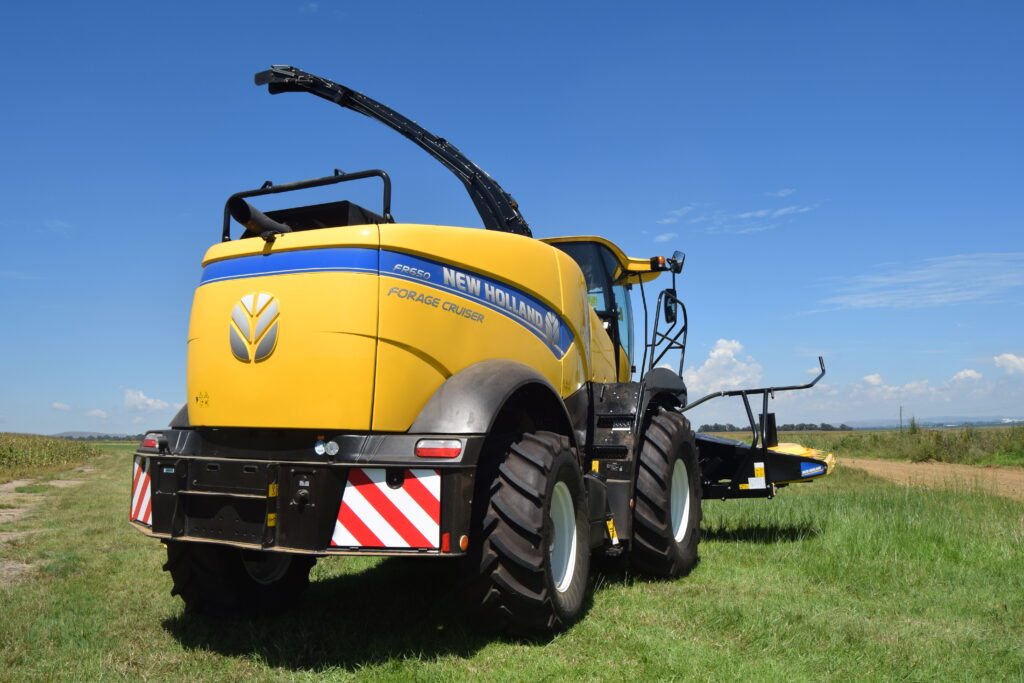
Even from behind, the smart yellow forage harvester attracts attention.
New Holland’s FR 650 forage harvester
The self-propelled forage harvester’s 16-litre FPT Cursor engine produces 480 kW and has been specifically designed for this machine. It delivers a whopping 2 751 Nm of torque at just 1 800 to 2 000 revolutions.
Jaco du Preez, marketing manager at New Holland, elaborates: “Connected to this trusted and reliable engine, we have a four-speed hydrostatic gearbox. Normally, a hydrostatic gearbox would only have two or three gears, but New Holland has been using the four-speed gearbox for years. This gives the advantages of improved fuel consumption.”
First and second gear are for cutting, and third and fourth gear are for driving on the road.
“One of the features of this machine that makes it so practical is the wide feed rollers,” says Jaco. “Our rollers are 900 mm wide, the widest on the market.”
The three rollers contain six metal detection sensors that immediately stop the rollers as soon as they identify metal – approximately within 3 000ths of a second! This helps prevent damage to the blades. There are also stone detection sensors that help detect stones before they reach the harvester’s choppers. These characteristics lead to an extended lifetime on each blade.
If the sensors detect any foreign objects such as metal or stone, the screen shows exactly where the sensor has picked them up, so someone can quickly remove the stone or metal.
Behind the feed rollers, is the cutting head. It is a roller on which the choppers are mounted. The cutting roller has 24 blades, twelve on each side, which are mounted at an angle to provide a better cutting action. “It works almost like a scissor movement that gives you a cleaner cut and thus also saves fuel,” says Jaco.
Another feature that New Holland has built into the FR 650 is the sharpening function. The blades are easily sharpened to further extend their life. Blades are sharpened backwards, which prevents damage to the edge.
Behind the cutting roller is the crop processing rollers with teeth that crack maize kernels. Two rollers with 99 and 126 teeth respectively break the kernels so livestock can get the starch and all the necessary nutritional value from the maize. The maize cracker can be moved away quickly so it is bypassed when the harvester is cutting grass.
After the maize has been cracked, a fan blows it up in the chute. An inoculant is sprayed onto the material in the chute, improving the longevity of the maize. From there it is blown out of the chute into the truck. The chute can rotate 210 degrees so the truck or trailer can drive on either side of the harvester to collect the material.
“As an option, a 3D camera can be installed in the chute which automatically moves the chute to where the wagon needs to be filled. It works by determining the dimensions of the truck and identifying where it needs to be filled,” says Jaco.
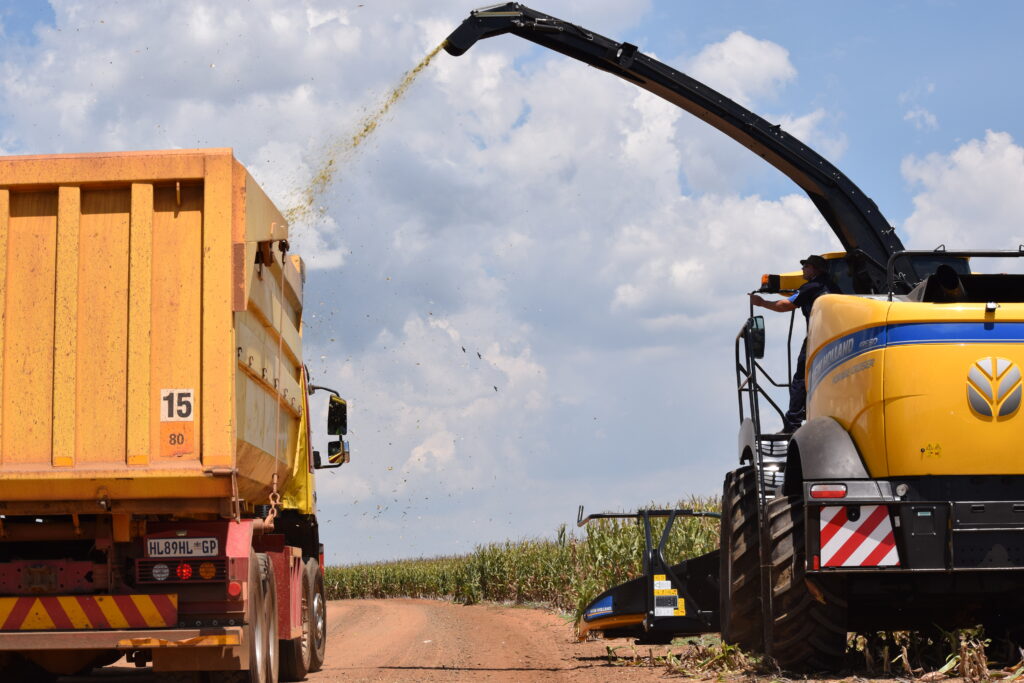
The cut maize falls neatly from the chute of the FR 650 forage harvester into the truck’s wagon.
The cabin is spacious and gives the operator an open feeling. There are windows all around to offer a 360-degree view. Now the operator can constantly see what is happening around the machine. The tall windows in the doors ensure a better view for the operator at all times.
All the gadgets and controls are on the right side of the cabin. The radio and air conditioning controls are mounted against the roof. Next to the armrest is the popular InteliView display and all the controls for easy reach.
Another useful feature of the FR 650 forage harvester is that maintenance work can be done quickly and easily. The air filter is easily accessed and replaced, as are most of the engine parts. There are LED beams all around the engine bay so that maintenance never has to be done in the dark.
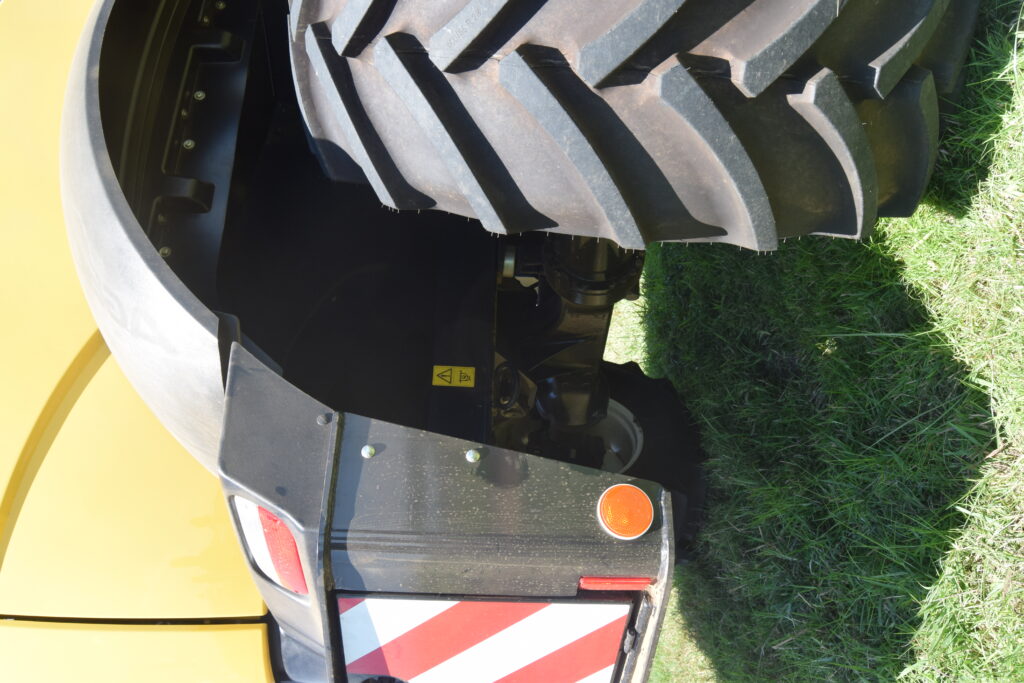
New Holland has improved the turning ability of the harvester. Its wheels can now turn 55 degrees from side to side to make it nimble in the field.
New Holland’s FR 650 forage harvester offers operators comfort
What also makes the harvester more economical is the Eco mode. “You can decide what speed you want to travel at and the machine itself adjusts the load, depending on the material you are harvesting,” explains Jaco. “Then there is also the Power Cruise mode which is ideal for when the maize rows are close together. You determine the load, and the machine determines the speed depending on the material being cut.”
Moisture and yield sensors are standard equipment on the forage harvester.
“You can also connect a GPS system to the machine to help you follow the most sensible route through the field,” says Jaco. “The harvester is not row-sensitive, so you can even cut across your fields.”
The harvester’s Field Mapping system stores the data on the moisture content and yield. This information helps the farmer to make the best use of his fields’ soil characteristics.
New Holland’s 600 BFI maize header makes silage making easy
The 600 BFI maize header is 6 meters wide. There are also models available in 4,5-m, 7,5-m and 9-m.
Dual drive to the maize header provides more power output and speeds up material inflow.
The 6-meter header has four large discs. “You can get headers with smaller discs, but I prefer the larger discs because they have fewer moving parts. It therefore requires less maintenance and saves costs,” says Jaco.
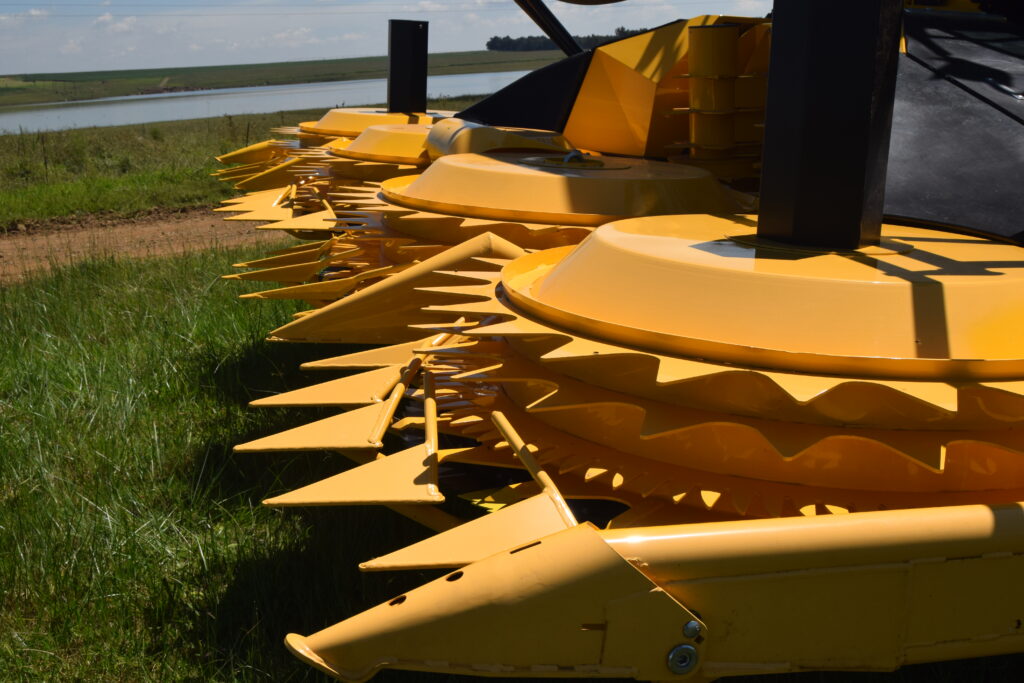
The 600 BFI has four discs that grab the maize and feed it to the harvester’s feed rollers.
This maize header can be folded up for easy movement through gates from one field to the next.
All settings and controls are hydraulically controlled from the cab.
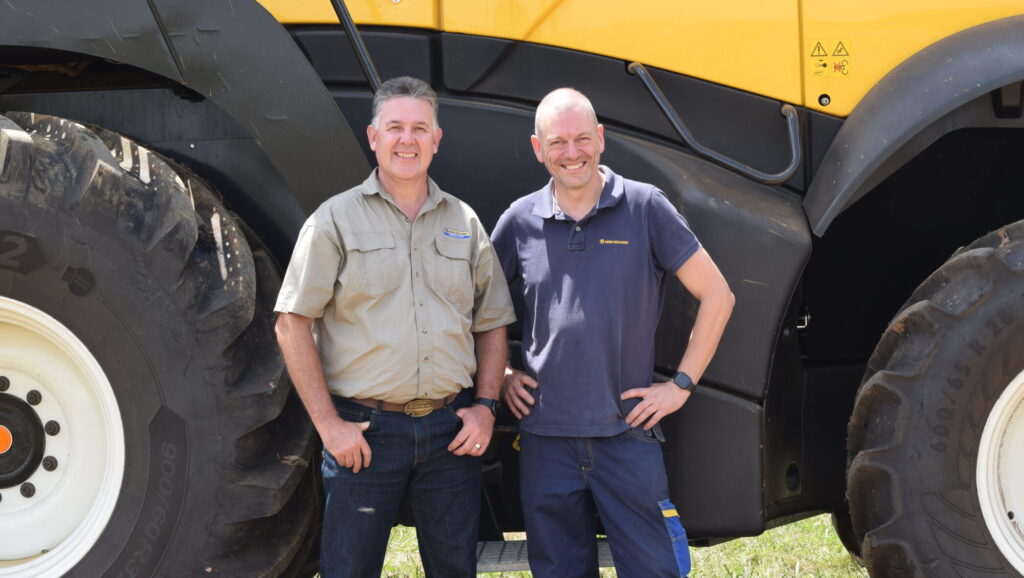
Jaco du Preez and Bart van Damme demonstrated to ProAgri what a formidable team the forage harvester and maize header are.
Contact Jaco du Preez at jacobus.du-preez@cnhind.com to find out more about the forage harvester. To locate your nearest New Holland dealer, visit the website today!

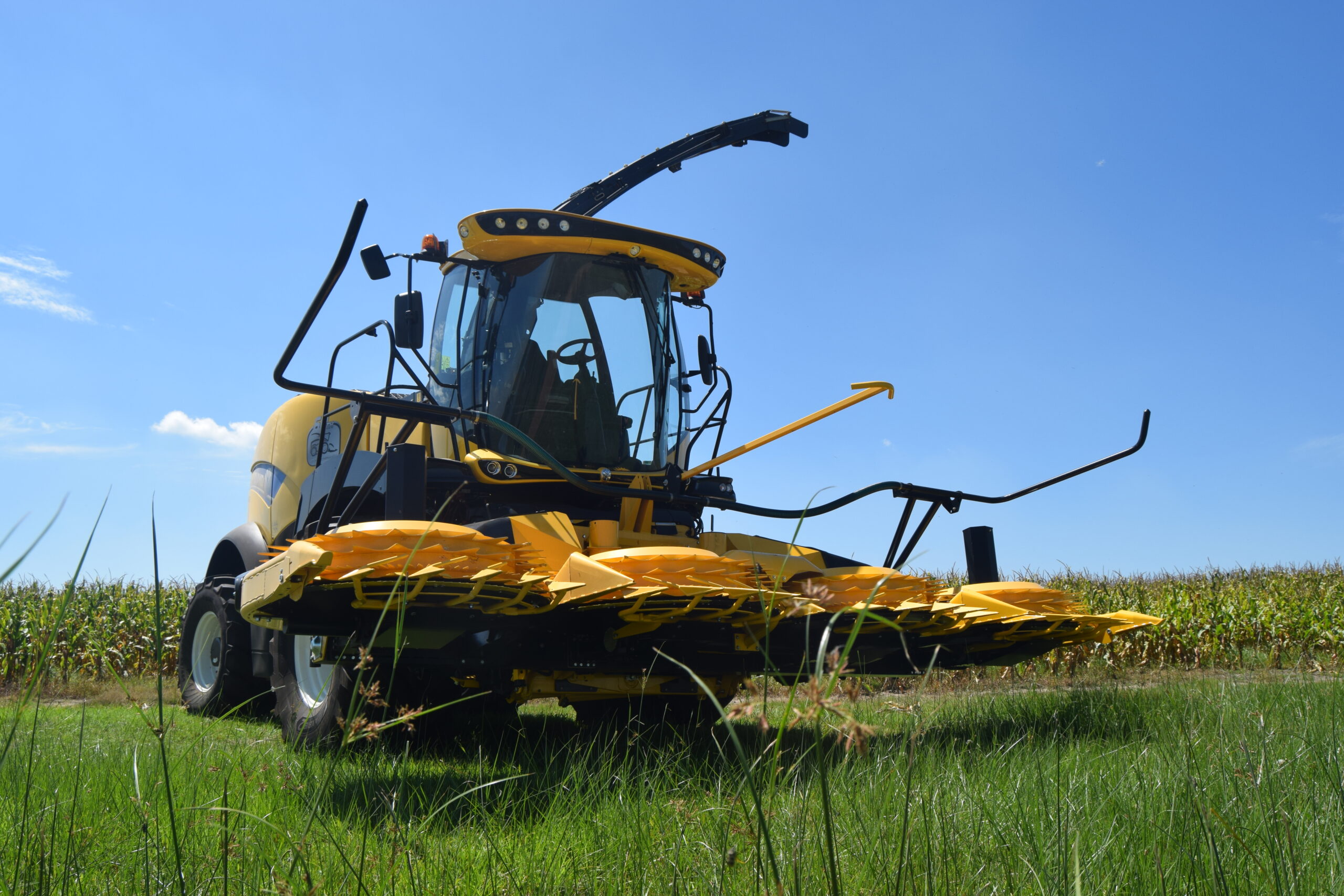








[…] the article New Holland’s FR 650 forage harvester triumphs with 600 BFI maize header on our […]